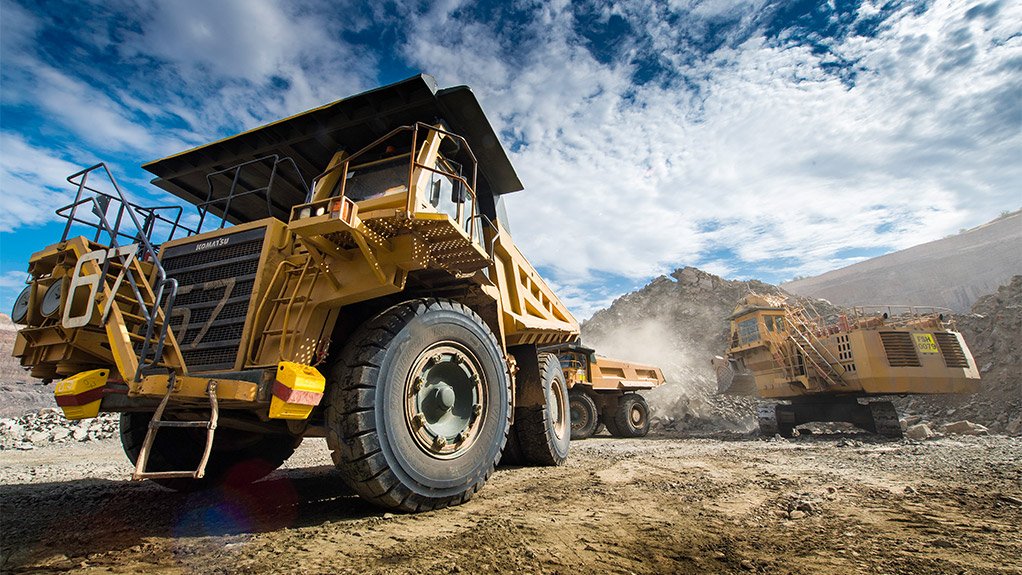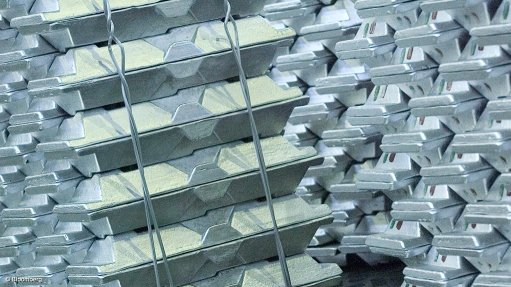Feasibility study proves benefits of Karowe underground expansion
The underground expansion at diamond miner Lucara Diamond’s 100%-owned Karowe diamond mine, in Botswana, is expected to not only double its mine life, but also generate significant revenue and cashflow until 2040.
A feasibility study into the undergound expansion has found that the adapted life-of-mine of an additional 15 years, including stockpiles, will produce 7.8-million carats of diamonds out to 2040, with the resource remaining open to depth.
Commenting on the rationale behind undertaking the expansion project for Karowe, Lucara president and CEO Eira Thomas told Mining Weekly Online that it “comes down to [Lucara’s] evolution in thinking” after production at the mine started in 2012.
Shortly thereafter, it was discovered that Karowe had “an unusual orebody”, leading the miner to consider the potential to extending the life-of-mine by going underground.
The updated resource confirms increasing value with depth, with the combined openpit and underground indicated resource now standing at 54.27-million tonnes at 15.3 ct per hundred tonnes (cpht) for a contained diamond resource of 8.3-million carats, excluding stockpiles.
The expansion is projected to generate about $5.2-bilion in gross revenue, with pre-production capital costs of $514-million expected for the underground project.
On the basis of construction starting in mid-2020, ore from underground mining will integrate into current operations providing mill feed from 2023 with a ramp-up to 2.7-million tonnes a year to the processing plant by 2026, as well as the opportunity to further increase throughput.
In the first half of 2020, Lucara will focus on detailed engineering and early procurement initiatives with respect to the underground expansion.
Current production rates would be maintained through the underground ramp-up period, Lucara stated in a statement on Tuesday.
Thomas said the diamond miner was “highly encouraged” by the results of the study, which had outlined a much larger economic opportunity for the mine than what was first envisaged in the 2017 preliminary economic assessment.
A significant portion of the cost to expand the underground mine could be funded from cash flow, she noted, adding that the investment was expected to be paid back in under three years as the underground expansion would allow Lucara to “exploit the highest value part of the orebody”.
With margins expected to remain healthy despite the application of conservative diamond pricing models that reflect the current difficult market environment, Thomas pointed out that Lucara’s short-term view was that the market was stabilising.
Larger diamond miners, like De Beers, have been taking steps to stem the crisis in the diamond industry by cutting prices across the board, but Thomas told Mining Weekly Online that Lucara would not be following a similar route to mitigate the challenging environment.
This is owing to Lucara being a “very small producer” in comparison, producing 400 000 ct/y versus a global supply of 16-million carats a year.
In being a specialised diamond producer, Thomas said that 70% of the miner’s revenue was generated from diamonds greater than 10.8 ct in weight.
“While we appreciate what the larger producers are doing to mitigate the difficult pricing environment, we’re finding that Lucara [has] a very loyal customer base that has been buying our diamonds over the last seven years, [which translates into] a solid demand for our product,” she elaborated.
She added that, while Lucara “doesn’t impact the global supply” of diamonds, the miner’s view is that “the demand for [Lucara’s] diamonds is still there”.
In also being a high-margin producer – 60% on average, it positions Lucara to “weather the downturn” in the diamond market.
“We believe [the challenging environment] is short term and that the fundamentals will remain strong, and that’s why we’re particularly excited about the results of this feasibility study, because under the current difficult pricing environment, this project is very strong economically,” she noted.
In the longer term, however, fundamentals were expected to strengthen in line with supply shortfalls from mature and depleting mines in Australia and Canada.
“It is important to note that a return to diamond prices observed in 2015 would nearly double the net present value of this project to $1.4-billion,” Thomas commented.
CFO Zara Boldt added that the diamond miner remained optimistic about diamond prices recovering in the short to medium term as global supply decreases in the next year.
She added that Lucara had also identified a number of optimisation opportunities for the underground expansion that could add additional value to the project in the near term.
Some of the opportunities include Lucara having the potential to mine deeper than the 310 m mine depth.
“There is an opportunity to mine deeper by driving a ramp down at the base of the current underground mining level, to below 310 m,” Thomas pointed out.
Another opportunity for the miner would be to optimise within its current operating environment, which will be characterised by the findings in the detailed engineering plan, from where Lucara will derive more insights on costs.
“We just want to emphasise the fact that we have a unique orebody [which is] very resilient and an expansion makes sense, even in the current difficult pricing environment,” she commented, highlighting that Lucara remains “highly leveraged when diamond prices recover”.
FINANCIAL RESULTS
In a separate statement on Tuesday, Lucara reported that a strong operating environment prevailed at the Karowe mine during the third quarter period, ended September 30, with guidances either met or exceeded with respect to all mining and processing activities.
During the three months, ore and waste mined totalled 800 000 t and 1.5-million tonnes, respectively, while 680 000 t of ore was processed for a recovered grade of 13.9 cpht.
Lucara recovered 104 990 ct, as well as 211 special diamonds from direct milling, representing 6.1% of the weight of all carats recovered through direct milling.
The miner also recovered seven diamonds weighing more than 100 ct each.
Revenue for the period totalled $45.3-million, or $390/ct, from the sale of 116 200 ct.
Lucara also recorded a net loss of $4-million for the quarter, resulting in a $0.01 loss a share for the quarter. This compares to net income of $5.1-million for the third quarter in 2018 and earnings a share of $0.01.
Cash flow from operations during the quarter totalled $13.8-million compared with cash flow from operations of $3.7-million during the same period last year.
The value of the rough diamonds sold through the Clara platform doubled in the three months, with $2.4-million of goods transacted and five sales held, taking the value transacted on the platform since sales began to $6-million.
Clara's customer base grew by another 35% in the third quarter, from 20 to 27 and sales continued to ramp up according to plan, Lucara said on Tuesday.
In terms of changes in guidance for the full-year, the miner expects revenue to be at the lower end of guidance of between $170-million and $180-million, while the operating cost per tonne processed is also expected to be at the lower end of guidance of between $32/t and $34/t.
Total carats recovered and sold are expected to be between 400 000 ct and 425 000 ct and total tonnes mined between 9.5-million and 11-million tonnes.
Comments
Press Office
Announcements
What's On
Subscribe to improve your user experience...
Option 1 (equivalent of R125 a month):
Receive a weekly copy of Creamer Media's Engineering News & Mining Weekly magazine
(print copy for those in South Africa and e-magazine for those outside of South Africa)
Receive daily email newsletters
Access to full search results
Access archive of magazine back copies
Access to Projects in Progress
Access to ONE Research Report of your choice in PDF format
Option 2 (equivalent of R375 a month):
All benefits from Option 1
PLUS
Access to Creamer Media's Research Channel Africa for ALL Research Reports, in PDF format, on various industrial and mining sectors
including Electricity; Water; Energy Transition; Hydrogen; Roads, Rail and Ports; Coal; Gold; Platinum; Battery Metals; etc.
Already a subscriber?
Forgotten your password?
Receive weekly copy of Creamer Media's Engineering News & Mining Weekly magazine (print copy for those in South Africa and e-magazine for those outside of South Africa)
➕
Recieve daily email newsletters
➕
Access to full search results
➕
Access archive of magazine back copies
➕
Access to Projects in Progress
➕
Access to ONE Research Report of your choice in PDF format
RESEARCH CHANNEL AFRICA
R4500 (equivalent of R375 a month)
SUBSCRIBEAll benefits from Option 1
➕
Access to Creamer Media's Research Channel Africa for ALL Research Reports on various industrial and mining sectors, in PDF format, including on:
Electricity
➕
Water
➕
Energy Transition
➕
Hydrogen
➕
Roads, Rail and Ports
➕
Coal
➕
Gold
➕
Platinum
➕
Battery Metals
➕
etc.
Receive all benefits from Option 1 or Option 2 delivered to numerous people at your company
➕
Multiple User names and Passwords for simultaneous log-ins
➕
Intranet integration access to all in your organisation





















